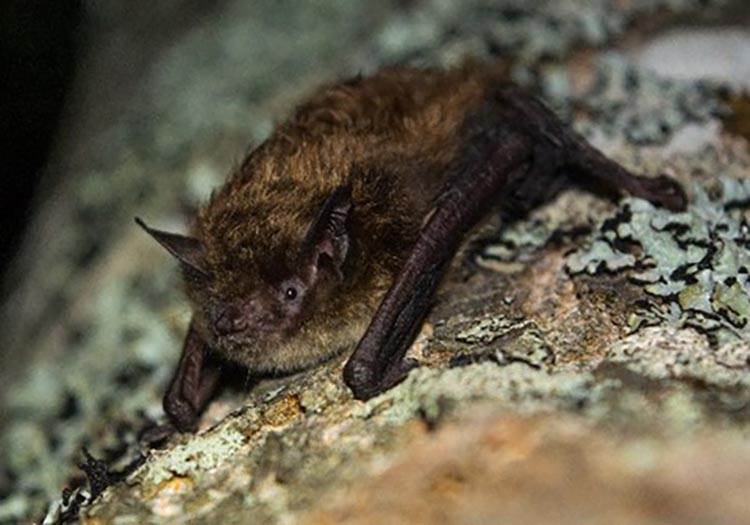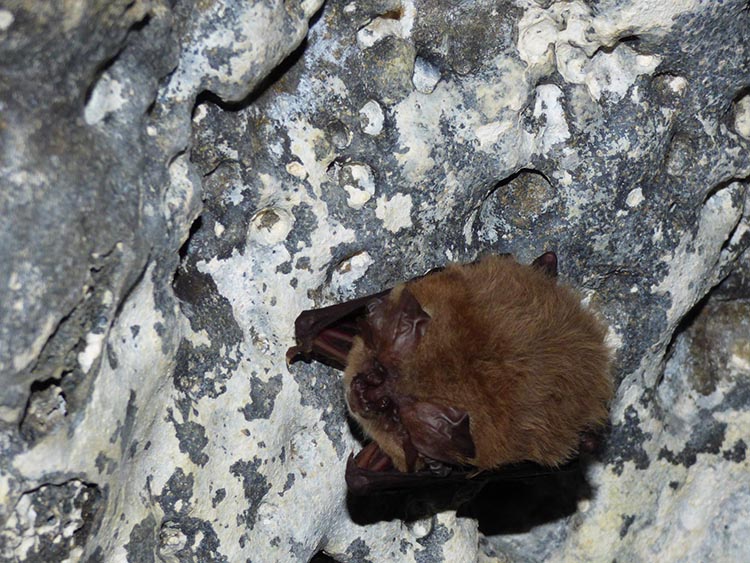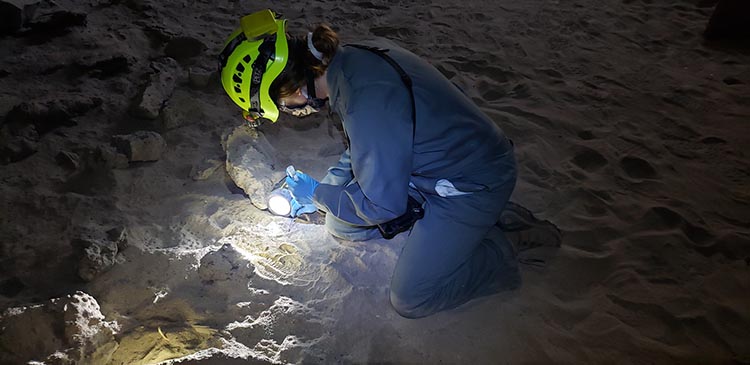A night in the life of one of Oregon’s best pest regulators: the little brown bat
October 15, 2025
In the dusky stillness of a cave nestled in the forested hills of Oregon, a young little brown bat (Myotis lucifugus) opens her eyes for the first time that evening. A little more than a year ago, she was born with light brown fur, joining a colony of little brown bats whose coats range in color from reddish brown to dark brown.
She’s been sleeping for the past 20 hours, clinging upside down to the rocky ceiling. For her, hanging this way is a necessity because it lets her use gravity to take flight. Unlike birds, little brown bats don’t have powerful legs and pectoral muscles that would allow them to take off flying from the ground.

This bat shares her cave with her pup and other female bats — some related, many not — in what is called a maternity colony. Here, she and other female bats have been attentively caring for their pups all summer while food has been plentiful. The communal warmth in the cave helps maintain the microclimate within the colony. The balminess in the cozy cave is crucial for the rapid development of the newborn bats. Her single baby will be her only pup until she gives birth again next spring or early summer.
After sleeping for such a long time, she is ready to begin her night. Flexing the delicate membranes of her wings, she stretches, listening to the rustling and high-pitched social calls of her cave mates. The warm summer breeze outside is alive with the quiet hum of insect wings beckoning her. It’s time to feed. She drops into a practice flight, circling the cave, her echolocation mapping the darkness in exquisite detail. She is now ready to perform one of her most impressive acrobatic feats: catching prey with her feet in the dark.
While flying through the dark forest, she detects her first target, a mosquito the size of a grain of rice. Her aerial acrobatics are on full display as she broadcasts a series of ultrasonic pulses, homing in on the insect using what is known as a “terminal buzz.” As she zeroes in, she maneuvers her tail to scoop her prey, transferring it to her mouth. On a good night like this one, she feasts, catching and consuming up to 10 mosquitoes per minute.
She loves going fast. One time, she got to a top speed of 20 mph to cross a river. Water was an important part of why she chose this roosting area; her food is drawn to the same moisture-laden air that surrounds the water and her cave.

Before returning to her pup, she dives under a bridge to rest with other bats for warmth, digesting what equates to half her body weight in bugs. As the temperatures drop, so does the bug activity. Thinking now of her precious pup, she free-falls, diving back into the night towards home.
Now that we’ve given you a taste of the life of a little brown bat, we hope you want to learn more about steps you can take to help these amazing creatures when they visit your yard or forestland.
We encourage you to check out the Oregon Forest Resources Institute’s Little Brown Bats and Forestry reference sheet, a free, downloadable resource for folks who would like to know more about Oregon’s little brown bats and how to manage forests with them in mind.
Since bats eat mosquitoes and other pesky insects, they’re great natural pest controllers. You can encourage bats to live and roost on your property in a few different ways. One way to protect bats and invite them to your property is by building a bat house. Learn more about building a bat house with this Oregon Department of Fish and Wildlife resource.

Lastly, if you’re interested in having a truly unique bat experience, consider checking out the Oregon Caves National Monument & Preserve in southern Oregon. The area supports a variety of native bats within the cave systems and surrounding forests. Researchers and park staff commonly report the presence of Townsend’s big-eared bats, especially in winter, as well as Yuma bats and long-eared bats.
Eliana Pool
Wildlife Biologist, Cafferata Consulting
Heather Thomas
Wildlife Technician, Cafferata Consulting
